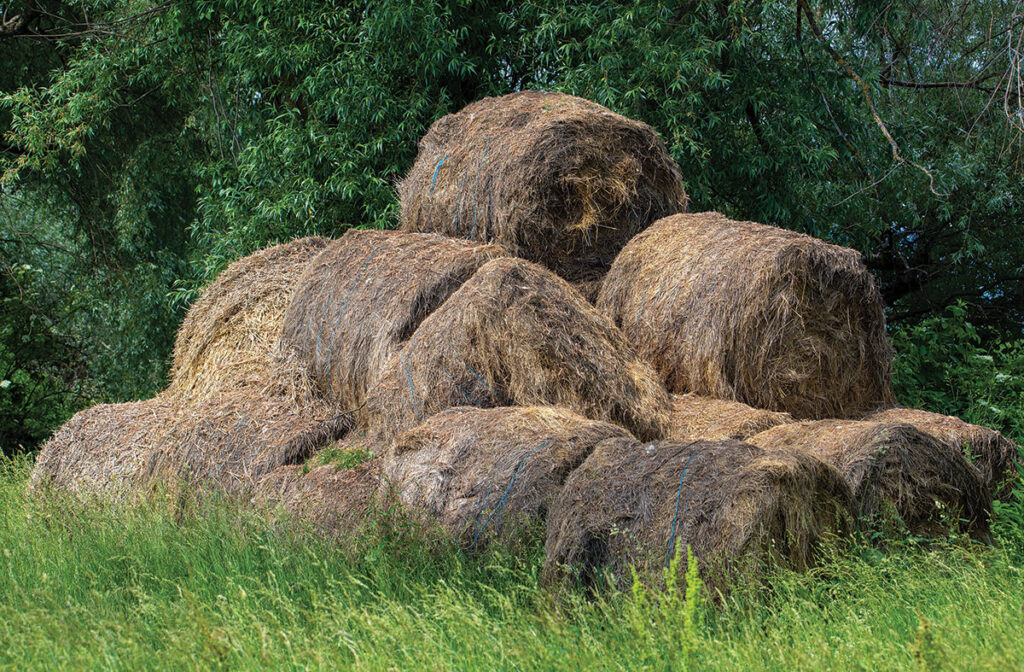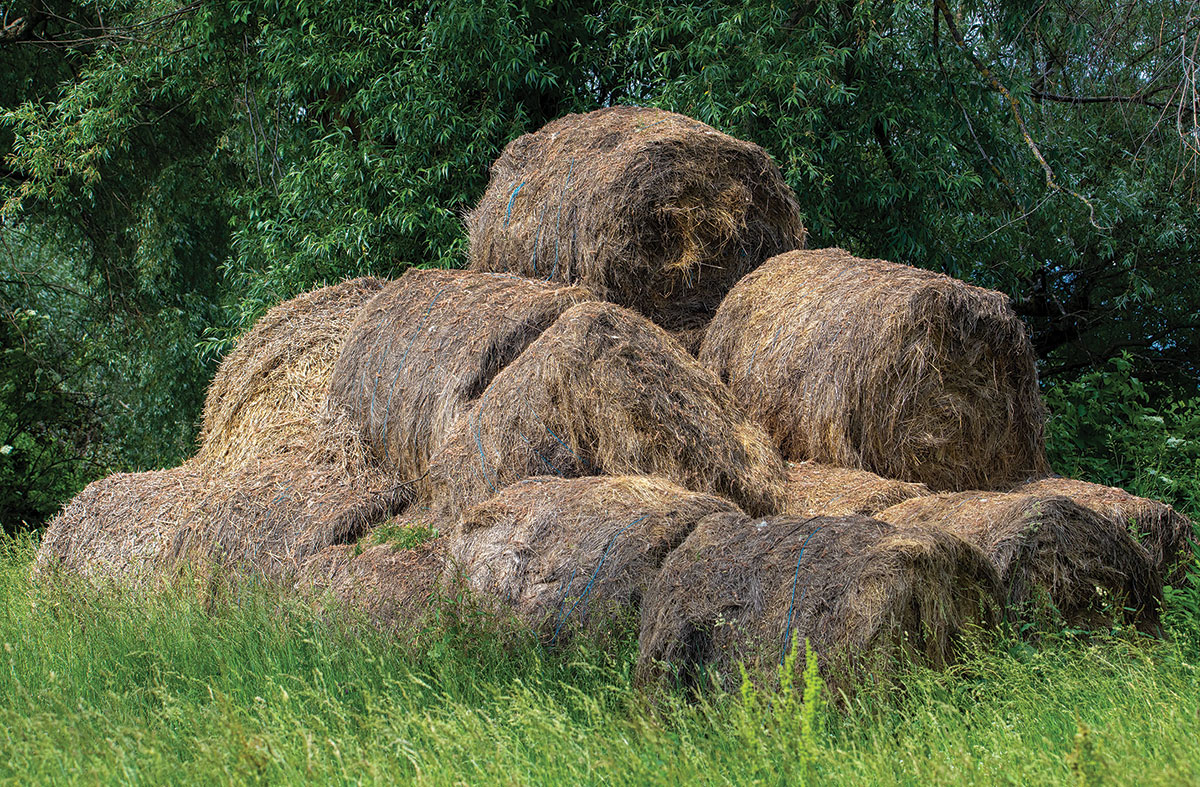
There are beneficial uses for older, leftover hay
As sprigs of spring’s green grasses start to emerge from the soil, the bright, freshness from the new season stands out in contrast to the old, leftover, or unused hay present on many operations in the Ozarks. Producers wanting to recycle spoiled or unusable hay have many options.
Covering Bare Spots
One use for spoiled hay bales or soiled remnants of fed hay in pastures is using the hay to cover bare spots. “Sometimes it is really good to use old hay to cover bare spots because whatever nutrients are left in the hay, if it is not too spoiled or too moldy, can go back into the soil,” Chloe Collins, extension specialist with the University of Missouri Extension, said.
Nitrogen is a key nutrient still lingering in old hay. When spread out in bare areas the nitrogen will make its way into the ground.
“People pay a lot of money to fertilize with nitrogen and if you have this hay that maybe you cannot use to feed your cattle, still keep the benefit on your farm and recycle it into your soil,” Collins added.
Keep in mind, pastures containing thick layers of uneaten, soiled hay can impede new forage growth. In these situations, producers may want to consider spreading out the leftover hay in a thinner layer or remove it and recycle to another area on the operation.
Packing Holes
If a bale is so old that it’s shapeless and melting into the ground, then it may not be the best option to utilize it to cover bare spots. Instead, hay that is falling apart and wet works well for producers looking to fill holes, ruts, or ditches. Hay that’s 3 to 5 years old is better suited to be packed into holes compared to spreading it on bare areas in pastures.
Mulch and Compost
Producers looking to use old, spoiled hay as garden mulch may want to think twice.
“I would be a little bit more cautious, especially if the hay is not to the point that it has just disintegrated. The seeds always have a chance of sprouting, especially in that nice fertile garden soil,” Collins stated.
If the old hay resprouts, producers will have even more weeds to remove from their gardens.
Though garden mulch may not be a great way to recycle old hay, using it for compost is a good application. When utilizing it for compost, add the hay in small quantities to the compost pile. It will take much longer for large chunks to turn into usable compost.
Extension specialists recommend breaking down the bales and putting in small batches to the compost pit over time. If producers have the equipment, then chopping the hay before adding it to the compost pile will speed up the composting process.
Producers living in areas where farmers are growing mushrooms have a market for their compost. People growing mushrooms like to use hay compost as long as the hay is lower in protein and not wet. Producers with excess compost may want to consider utilizing a website such as Feedstuff Finder to list available compost.
Other Use
If the hay has a minimal amount of mold, then it can still be utilized as forage for cattle. “If you have a light amount of mold in hay, a recommended way to feed it is to roll it out in your pastures so the cattle can sort through it. They will pick and choose the good parts from the moldy parts, and it helps to distribute that out so you are getting some benefit from your moldy hay,” Collins explained.






